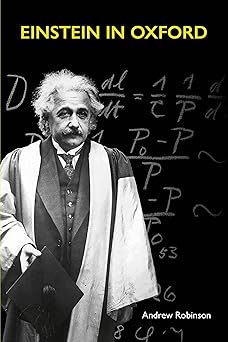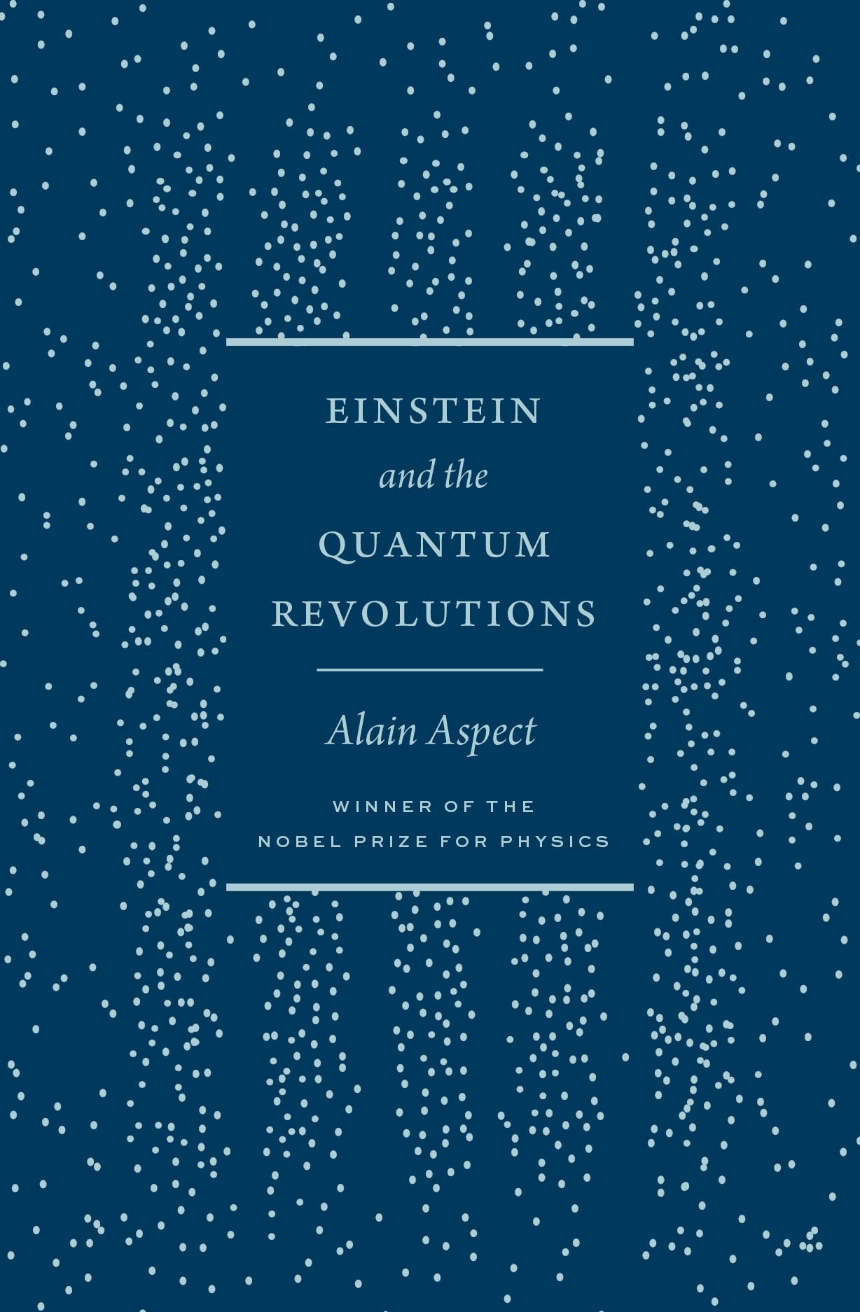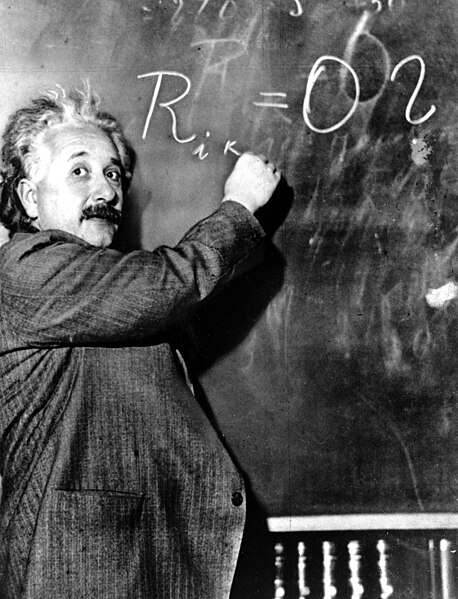
- Free Article: No
- Contents Category: Science
- Review Article: Yes
- Article Title: Proof of entanglement
- Article Subtitle: Two slim, not slight books on Einstein
- Online Only: No
- Custom Highlight Text:
The most famous blackboard in the world resides in Oxford’s History of Science Museum. It was salvaged from the cleaners after Albert Einstein gave an Oxford lecture in 1931, and I confess to being one of the many visitors to gaze upon it with awe. It is a talisman, its continuing existence a cultural recognition of the thrall, and importance, of genius.
- Featured Image (400px * 250px):
%20Associated%20Press%20wikimedia%20commons%20FEAT.jpg)
- Alt Tag (Featured Image): Robyn Arianrhod reviews ‘Einstein in Oxford’ by Andrew Robinson and ‘Einstein and the Quantum Revolutions’ by Alain Aspect
- Book 1 Title: Einstein in Oxford
- Book 1 Biblio: Bodleian Library Publishing, $34.99 hb, 96 pp
- Book 1 Cover Small (400 x 600):

- Book 1 Cover (800 x 1200):

- Book 1 Readings Link: https://www.readings.com.au/product/9781851246380/einstein-in-oxford--andrew-robinson--2024--9781851246380#rac:jokjjzr6ly9m
- Book 2 Title: Einstein and the Quantum Revolutions
- Book 2 Biblio: University of Chicago Press, US$15.99 hb, 94 pp
- Book 2 Cover Small (400 x 600):

- Book 2 Cover (800 x 1200):

- Book 2 Readings Link: https://www.readings.com.au/product/9780226832012/einstein-and-the-quantum-revolutions--alain-aspect--2024--9780226832012#rac:jokjjzr6ly9m
Robinson also points out that Einstein made a mistake in his blackboard calculation. The book shows a photograph of the magical board, with the age of the universe calculated to be ten billion years. (It is currently estimated at 13.8 billion.) This is the kind of simple slip-up mathematicians often make in private, and few would have noticed at the time, for cosmology was in its infancy. Indeed, Robinson shows that in the early 1930s Einstein spent several happy months in Oxford, thanks to the efforts of the German-born Oxford professor of experimental physics, Frederick Lindemann.
When you are an icon of genius in your own time, everyone wants to know how you created your famous theory – and not just Oxford dons. Over the years, Einstein gave numerous lectures in various places. After all, general relativity is one of humanity’s most sublime intellectual achievements. Einstein is famous for ‘thought experiments’ rather than laboratory ones, and for the extraordinary imagination that led him to suggest that gravity seems to act not through some remote, disembodied force, but via the geometrical curving of spacetime. Yet what surprises many commentators is Einstein’s emphasis on mathematics in some of his lectures about making physical theories.
Robinson quotes popular science writer Graham Farmelo, who opines that Einstein ‘downplayed the role of physical reasoning’, elevating the importance of mathematics through ‘distorted recollections of the final month of his search for the correct field equations of gravity’. Robinson quotes an opposing view from Einstein’s colleague Abraham Pais, but his own view is clear in his focus on Einstein’s 1933 Herbert Spencer Lecture, whose mathematical emphasis he then briefly contrasts with other Einstein talks. I am familiar with all these lectures, and, like Pais, I read them differently. In some of them – especially the Spencer Lecture – Einstein is trying to distil, from his own and other people’s experience, a general method for making physical theories. In others, he focuses on the actual, step-by-step process of his journey to general relativity. Any differences in emphasis, I suggest, are due more to nuances of language or topic than to ‘distorted recollections’. Yet Robinson is right in that not even Einstein had the last word on theoretical method. He intimated as much in his Spencer Lecture when he mentioned quantum theory, which plays by its own bizarre rules, but we now know that his method also failed to deliver his long-sought geometrical unification of electromagnetism and gravity, on which he was working at the time.
Still, spare a thought for poor Einstein, who was often presented with an uncomprehending audience – smart people in their own fields, but without a clue about relativity. At Oxford, this included even the physicists, for they focused on experiment rather than theory. Einstein also presented his Spencer Lecture in English, a great challenge for him in 1933. But these were the least of his problems. This lecture must have been prepared under extreme duress, Robinson tells us, for the Nazis had recently seized all Einstein’s assets, and he and his wife Elsa were refugees in temporary accommodation in Belgium.
Robinson is not the first to explore Einstein’s Oxford connection – others include Oxford historian Robert Fox – but this accessible and beautifully produced little book brings the story to a wider audience. And what a fascinating, poignant tale Robinson tells, briefly encompassing not just Einstein’s lectures, but also eyewitness accounts of his personality (including a marvellous one from the future Nobel literature laureate William Golding), his music (including the professional musician who deemed Einstein’s violin playing ‘relatively good’), his liberal politics, and his flight from Nazi persecution, as well as Lindemann’s remarkable efforts in offering an Oxford haven for him and other German Jewish scholars.
 Albert Einstein, Pasadena, 1931 (Associated Press via Wikimedia Commons)
Albert Einstein, Pasadena, 1931 (Associated Press via Wikimedia Commons)
Einstein features (albeit relatively briefly) in another beautifully produced little book, Einstein and the Quantum Revolutions by Alain Aspect. Aspect shared the 2022 Nobel Prize for physics for his experimental proof of the nature of ‘entanglement’, which was postulated by Einstein and two Princeton colleagues in 1935. (According to Robinson, Einstein chose permanent asylum at Princeton rather than Oxford because it allowed him to focus on research.)
Unlike a cricket ball or spaceship, a subatomic particle’s definite state cannot be predicted in advance; until the particle is observed, quantum theory offers only probabilities. But here is the thing: suppose a researcher prepares two particles together – two electrons, say – and sends one of them to the other side of the world; no matter which property the researcher decides to observe in the lab-based particle, quantum theory says that the faraway particle would immediately manifest the same property. As Aspect puts it, it’s as if every time you randomly toss a coin, a faraway friend’s simultaneous, seemingly random toss gives the same result as yours.
Einstein hoped that entanglement would prove, by its apparent absurdity, that these correlations must have been predetermined in a way that quantum theory had not yet accounted for. Therefore, he argued, quantum mechanics was incomplete. Niels Bohr famously disagreed, but few others cared. After all, the theory worked: as Aspect notes, early applications gave us transistors (the switches and amplifiers underpinning computers and other electronic devices), and lasers (whose uses include fibre-optical telecommunications).
Half a century after the Bohr-Einstein debate – and inspired by John Bell’s 1964 mathematical paper on those controversial correlations – Aspect’s spectacularly sensitive experiments gave the definitive answer: entangled particles do behave as quantum mechanics suggests, and the theory is not incomplete as Einstein had believed. Rather than proclaiming he had proved Einstein wrong, however, Aspect emphasises that it was Einstein who first identified the concept of entanglement.
Aspect also achieved the amazing feat of producing single photons, quantum ‘particles’ of light. In a brief but thrilling section, he explains how he proved that each photon exhibits both wave and particle behaviours. As for practical applications of entanglement, Aspect notes that it offers hope of energy-efficient, environment-friendly quantum computers, and of secure cryptography.
There is more elsewhere, now, about Aspect and his work, but this book was originally published in French three years before his Nobel Prize; perhaps that is why he chose to write an overview of the quantum revolutions, rather than to explain his own work on entanglement in more satisfying detail. Still, the book’s brevity and clear writing does make for an interesting overview of quantum ideas and their history.
Aspect’s and Robinson’s books are slim but not slight. Aficionados will likely want more detail or analysis, but nonetheless, the stories here are beguiling.


Comments powered by CComment